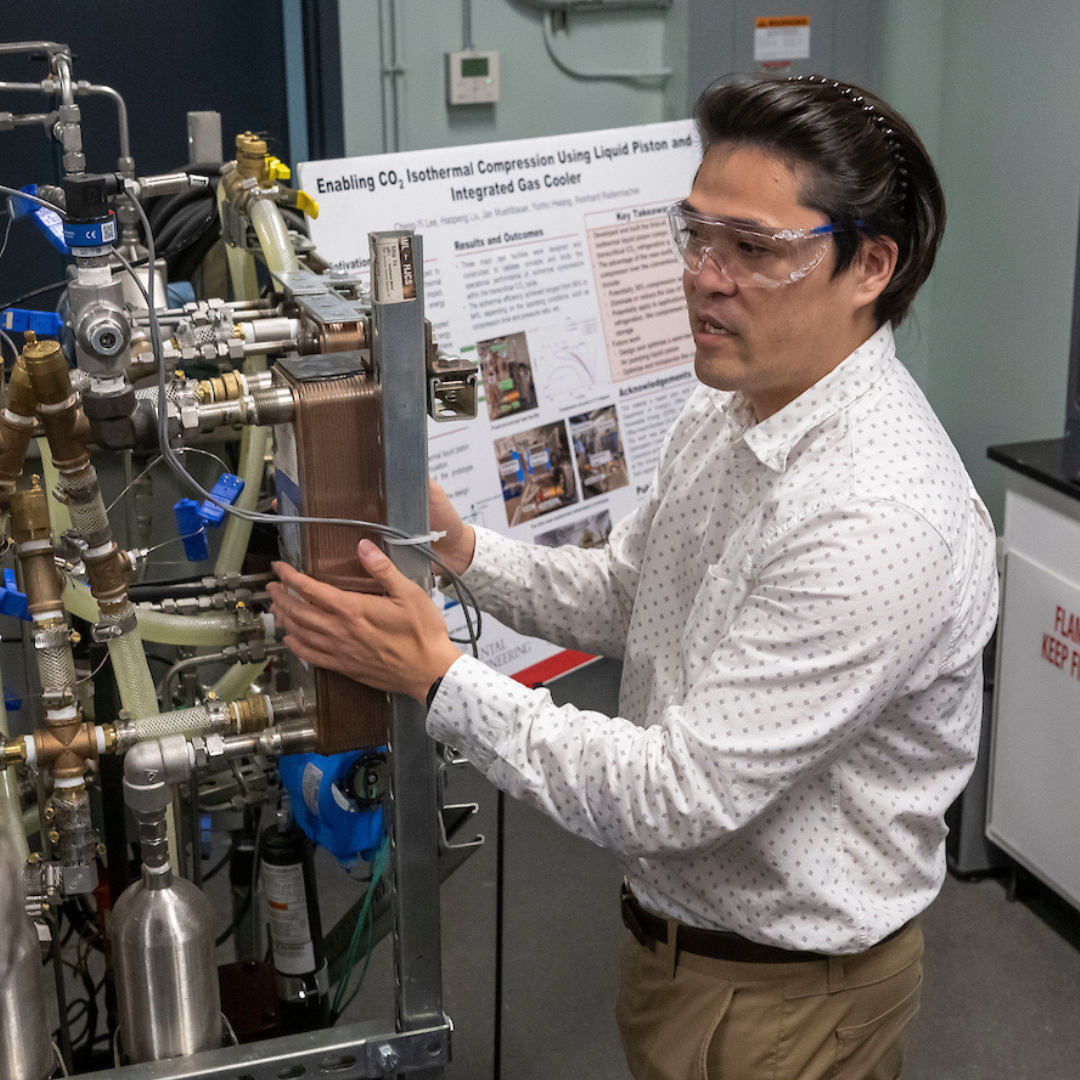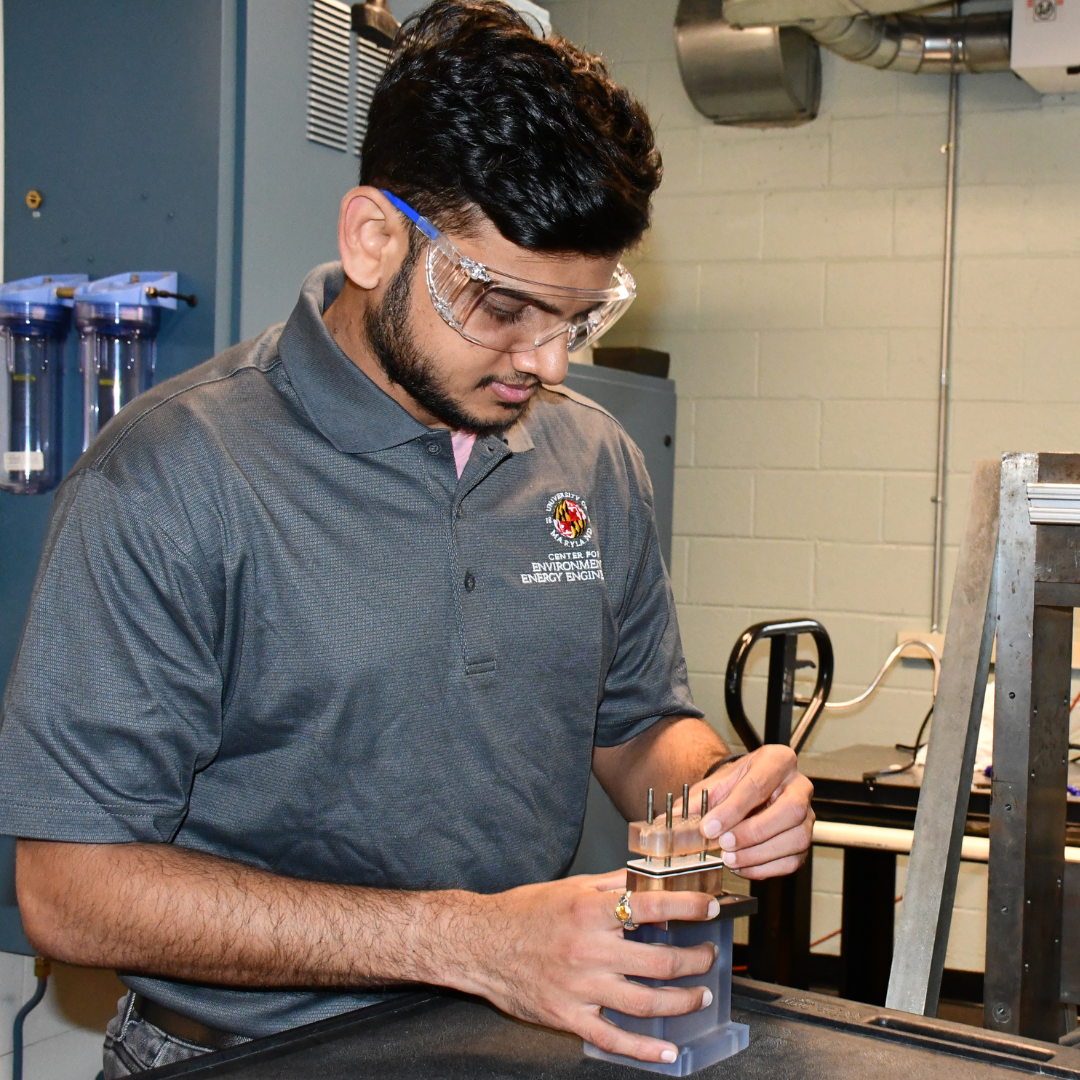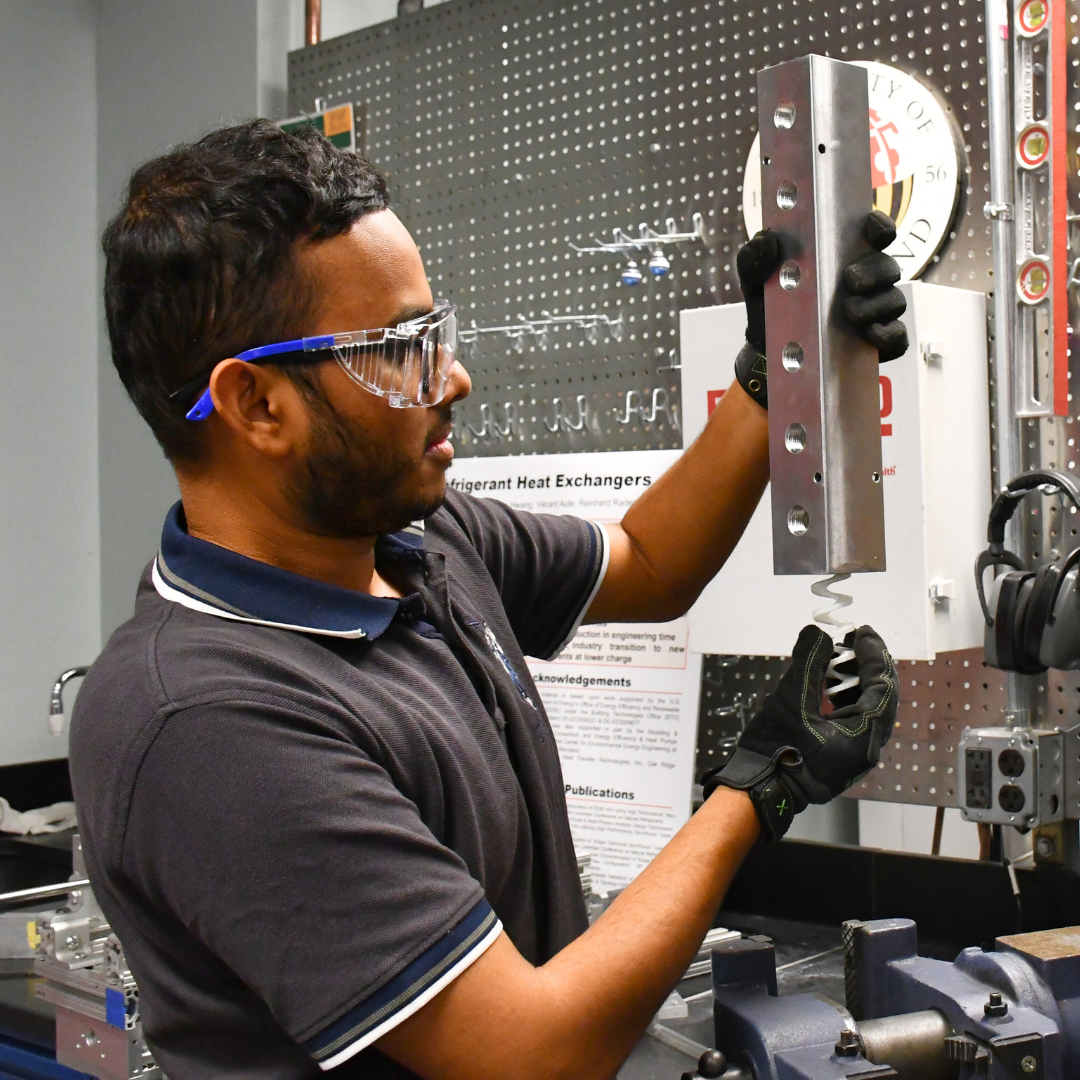News Story
It's Getting Hot in Here
You might see them every day—in fact, one may be looming over your head right now—but have you ever wondered how fire sprinkler systems actually work? Maybe you’ve seen sprinklers on-screen in TV and film dousing characters, ruining romantic moments, or helping a hero in a tricky situation—but have you ever wondered if that’s what would really happen if a burnt meal triggers the sprinkler in your apartment?
Common engineering and science tropes seen in film and media often inform what people think is possible. To dispel movie myths and show how engineering can be cooler than fiction, University of Maryland (UMD) engineers are taking a deep dive into popular media depictions of engineering in a new video series, Ask An Engineer.
In the first episode hosted by bioengineer Priscilla Lee (’21, M.Eng. ’22), resident sprinkler expert and Clinical Professor of Fire Protection Engineering Kenneth Isman breaks down the realities of how fire sprinkler systems really work.
Isman is not only a former engineer with the National Fire Sprinkler Association (NFSA) and prolific presenter at more than 500 seminars and workshops on fire protection systems, he wrote the textbook on sprinklers: Layout, Detail and Calculation of Fire Sprinkler Systems, published by NFSA.
Exploring scenes from "Mean Girls" and "Stranger Things" to "The Incredibles" and "The Office", Isman provides an expert take on what the big and small screens get right—and more often, get wrong about the engineering and functions of fire sprinklers.
“When it comes to fire sprinkler systems in films and TV, they get many things wrong,” Isman explains in episode one of Ask An Engineer. “They give the public a real incorrect image about the way fire protection systems, and mostly fire sprinkler systems, work.”
But is there a film that got it right?
“[In 'Eraser'], Arnold Schwarzenegger’s character uses a gun to shoot out a fire sprinkler in order to get water to flow. This sets off a water flow alarm that gets people to evacuate a building,” Isman says. “The alarm also triggers the locked door to open, so he can escape. That is very realistic.”
Even the National Fire Protection Association (NFPA) agrees with Isman, citing the 2002 film for its “impressive knowledge” of NFPA safety code requirements.
While TV and movies lean on fire sprinkler fallacies for comedic and dramatic effect, understanding how they work in the real world is an important part of safety technology that protects people, property, and the environment from fire. Fire protection engineers are crucial contributors to these technologies, and UMD is home to the only ABET-accredited fire protection engineering undergraduate program, and one of only three graduate degree programs, in the U.S.
"The importance of Fire Protection Engineering is that it directly influences the safety of human life and property," explained senior Jacob Witlin on why he chose to pursue fire protection engineering at Maryland. "The end result of any fire protection engineering project is that it keeps the world safer and protects lives. There is such a broad range for the application and use of this skill set that keeps this major dynamic and makes it appealing."
To learn more about this topic and future Ask an Engineer videos, visit Maryland Engineering’s YouTube channel to like and subscribe!
Published September 1, 2022












